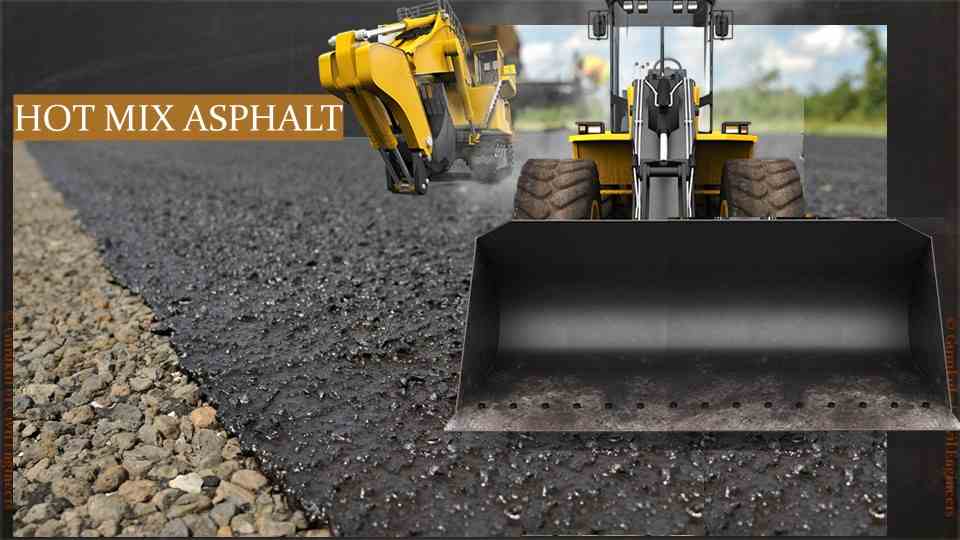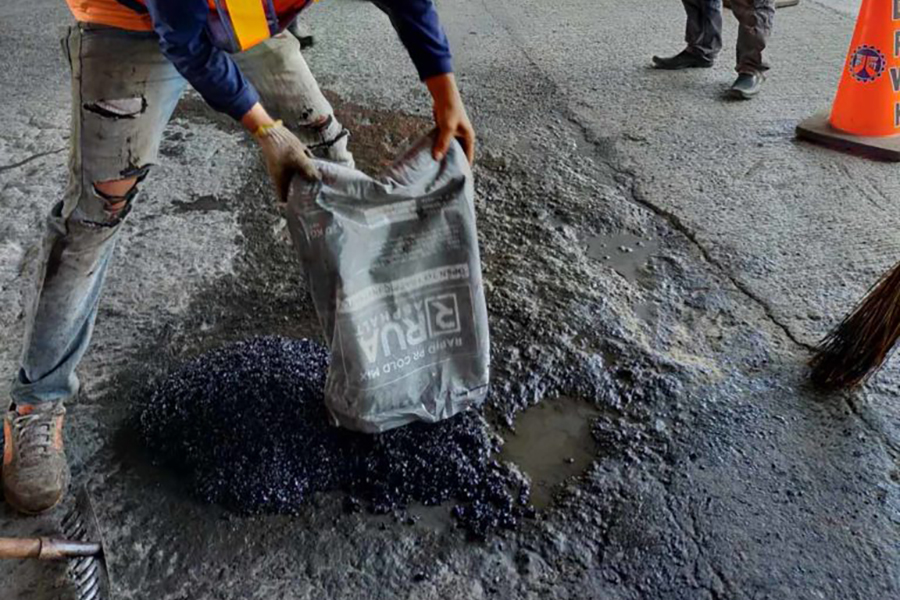Experience the Distinction: Hot Mix Asphalt Paving for Regrading Projects
Experience the Distinction: Hot Mix Asphalt Paving for Regrading Projects
Blog Article
Opening the Keys of Hot Mix Asphalt Innovation
Discovering the midsts of warm mix asphalt modern technology reveals a globe where specific solutions and thorough processes converge to form our roadways and framework. The blend of aggregates, binders, and fillers isn't just a building and construction job however a calculated orchestration of sturdiness and efficiency. As we peer right into the detailed dancing of parts, a tapestry of durability and sustainability unravels. However what lies under this surface area of asphaltic proficiency, and what tricks wait to be unveiled in the world of leading advancements?
Relevance of Hot Mix Asphalt
Warm Mix Asphalt plays a vital role in modern-day infrastructure development as a result of its sturdiness and cost-effectiveness. As one of the most typically made use of paving product for roads, highways, and car park, Warm Mix Asphalt uses an array of benefits that add to its importance in building tasks. One essential benefit is its capacity to hold up against hefty traffic tons and harsh climate condition, offering a resilient and dependable surface for transport networks. In Addition, Hot Mix Asphalt is affordable in both preliminary building and construction and long-term maintenance, making it a recommended choice for lots of framework tasks.
The longevity of Warm Mix Asphalt originates from its make-up, that includes aggregates, binder, and filler products that are meticulously picked and blended to fulfill certain efficiency demands. This accurate combination leads to a flexible and solid sidewalk that can withstand regular use without substantial wear and tear. Moreover, Hot Mix Asphalt is 100% recyclable, more improving its sustainability and environmental benefits. Generally, the significance of Hot Mix Asphalt in framework growth can not be downplayed, as it continues to be a keystone of contemporary building practices.
Components of Asphalt Mixes
The make-up of asphalt mixes contains thoroughly picked aggregates, binder, and filler products that are important for accomplishing certain efficiency demands. Accumulations are the main part of asphalt mixes, supplying strength and stability. These accumulations can be all-natural, such as gravel or smashed stone, or synthetic, like recycled products from old sidewalks. The binder, usually asphalt or asphalt cement, holds the accumulations with each other and offers adaptability and sturdiness to the mix. The option of the binder is essential as it straight affects the mix's performance in different weather condition problems. Fillers, such as hydrated lime or Portland cement, are used to boost the mix's workability and aging resistance. Angled Parking.
The mix and percentage of these components play a considerable function in determining the quality and performance of the asphalt mix. Engineers carefully design the mix to meet particular requirements, considering elements like web traffic volume, climate conditions, and pavement life-span. Correct option and balancing of accumulations, binder, and fillers are important for producing resilient, long-lasting asphalt sidewalks.
Combining and Manufacturing Methods

When the accumulations are chosen, the binder, frequently asphalt cement, is included in bind the materials with each other. The binder's top quality and amount considerably impact the mix's strength, resistance, and versatility to environmental variables. Furthermore, fillers like moisturized lime or Portland cement may be incorporated to boost details features of the asphalt mix, such as its workability or dampness resistance.
Throughout production, the accumulations and binder are heated, normally between 250-325 ° F(121-163 ° C ), to help with mixing and make certain correct finish of the aggregates. The mixing procedure must be comprehensive to achieve an uniform mix that promotes the wanted performance characteristics of the asphalt. Numerous methods, such as batch blending or drum mixing, are employed to attain constant and top quality asphalt mixes for construction tasks.
Elements Affecting Asphalt Efficiency
Aspects affecting asphalt efficiency encompass a variety of variables that influence the resilience, durability, and overall quality of asphalt pavements. One crucial variable is the quality of materials used in the asphalt mix.

Layout considerations, such as useful site sidewalk density and drain, are vital in making certain the lasting efficiency of the asphalt pavement. By carefully thinking about these service providers, designers and variables can optimize asphalt performance and boost the service life of sidewalks.
Sustainable Practices in Asphalt Innovation

WMA allows for the production and positioning of asphalt blends at reduced temperature levels contrasted to typical hot-mix asphalt, resulting in reduced energy consumption and greenhouse gas emissions. The use of permeable asphalt mixes can assist reduce stormwater overflow concerns by enabling water to penetrate through the pavement and right into the ground, promoting all-natural water purification and reenergize procedures.
Final Thought
To conclude, warm mix asphalt modern technology plays an essential function in contemporary framework growth because of its durability and cost-effectiveness. By thoroughly balancing components, utilizing appropriate blending methods, and thinking about different aspects, designers can produce top notch asphalt blends that stand up to rush hour tons and extreme climate problems. Welcoming lasting methods, such as using recycled materials and warm-mix technologies, better boosts the environmental friendliness of asphalt technology.
Blending and manufacturing techniques in warm mix asphalt modern technology include the accurate combination and handling of accumulations, binder, and fillers to create a high-performance and sturdy asphalt mix.Aspects influencing asphalt performance incorporate a variety of variables that impact the longevity, durability, and general top quality of asphalt pavements. Lasting methods in asphalt technology incorporate various campaigns aimed at reducing the ecological impact of asphalt manufacturing check out this site and paving processes. By including recovered asphalt sidewalk (RAP) and recycled asphalt roof shingles (RAS) right into brand-new asphalt mixes, the sector can substantially minimize the usage of raw products and power, while likewise decreasing landfill waste.
WMA permits for the production and positioning of asphalt mixes at lower temperatures contrasted to typical hot-mix asphalt, resulting in decreased energy consumption and greenhouse gas discharges.
Report this page